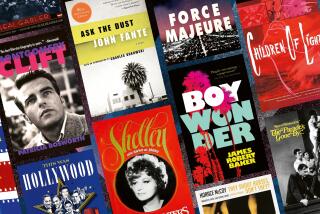The Essential Marlene
“From the sequins of ‘The Blue Angel’ to the dinner jacket of ‘Morocco,’” Jean Cocteau wrote in 1954, “from the shabby black dress of ‘Dishonored’ to the peacock feathers of ‘Shanghai Express,’ from the diamonds of ‘Desire’ to the American uniform, there comes to us
Other admirers quoted in “Marlene Dietrich: Photographs and Memories,” which is an extraordinary book about an extraordinary subject, include Josef von Sternberg (who notes her mood swings from “severe depression” to “unbelievable vigor”), Orson Welles (who believes her scenes in “Touch of Evil” are “as good as anything I’ve ever done”), Kenneth Tynan (“She has sex but no particular gender”) and Ernest Hemingway (“If she had nothing more than her voice, she could break your heart with it”).
Compiled from hundreds of items in the Dietrich Collection in the Filmmuseum Berlin, many published for the first time, the book also records her lovers of both sexes in photographs and letters. Heading the list are Von Sternberg, Jean Gabin, Erich Maria Remarque, Mercedes de Acosta, Maurice Chevalier, Edith Piaf, Yul Brynner and Joe Carstairs, a cross-dressing Standard Oil heiress who once held the world record as the fastest female speedboat racer.
The letters reveal the often desperate passions that Dietrich aroused, but with a performer, it’s the pictures (289 of them, all handsomely reproduced in black-and-white and color) that tell the most dramatic stories. The first of the five sections, “Portraits,” begins with Dietrich in Berlin, 1927. She hasn’t yet found the “look” that director Von Sternberg will guide her toward in “The Blue Angel” (1930). Only six months later, “Morocco” brings it to near perfection and celebrates the bisexuality that always intrigued her mentor. And more than 20 years later (when she was 53), two portraits by Richard Avedon show her in full, sublimely ambiguous command.
The color images of “Beads, Furs and Feathers” focus on performance gowns and accessories. A sequined dress with an ostrich-feather train and the black tails she favored over white (which “reminded her of Liberace”), reflect the same ambiguity. It’s reflected again in “Possessions,” a Festschrift of offstage costumes and gifts including a Schiaparelli blue silk lounge suit and the pistols that Gen. George Patton gave her.
“At Work” begins with images from Dietrich’s silent movies, covers the Von Sternberg era and illustrates some equally remarkable later performances in “Destry Rides Again,” “A Foreign Affair,” “Touch of Evil” and “Judgment at Nuremberg.” It ends with Dietrich as the stage virtuoso who toured a one-woman show--in see-through costumes--around half the world from 1954 to 1975 (when she was 74).
But equal visual time is rightly given to the Dietrich of World War II, who sang and played her musical saw to thousands of spellbound GIs behind the battle lines, who assisted refugees, accompanied Patton’s Third Army on its advance to the Siegfried Line and entered Berlin wearing her Eisenhower jacket with a Jump Master pin from the 82nd Airborne Division on one lapel and a badge from the Soviet Elite Guard on the other.
The book ends before Dietrich, crippled by Buerger’s disease, withdraws to cranky seclusion. Partly, no doubt, because it’s a tribute, not a biography; but in any case, there are no images of those last years. And the essential Marlene, richly exhibited throughout “Photographs and Memories,” also makes a brief but telling appearance in the typewritten draft of an article she wrote titled “Artists.”
When she notes that “all their reactions go to extremes,” it’s an acute autobiographical comment from someone so self-involved and so generous, so self-deprecating and yet such a tireless keeper of her own flame, and from an equally tireless sexual adventurer who was never really interested in the sexual act, but obsessed with the romantic notion of “love” and with proving that age didn’t lessen her powers of attraction.
While I was visiting her in her dressing room after “An Evening With Marlene Dietrich” at the Ahmanson Theatre in 1958, a reporter from Time magazine asked for an interview for inclusion “in the ‘People’ section.” Rebuffing him with a subtly inflected disdain, Marlene spoke her own epitaph. “‘People?,’” she said. “‘People?’ I am not ‘People!’”
*
Gavin Lambert is the author of “Inside Daisy Clover” and “The Slide Area,” which were recently reissued. His most recent books are “On Cukor” and “Mainly About Lindsay Anderson.”
More to Read
Sign up for our Book Club newsletter
Get the latest news, events and more from the Los Angeles Times Book Club, and help us get L.A. reading and talking.
You may occasionally receive promotional content from the Los Angeles Times.







